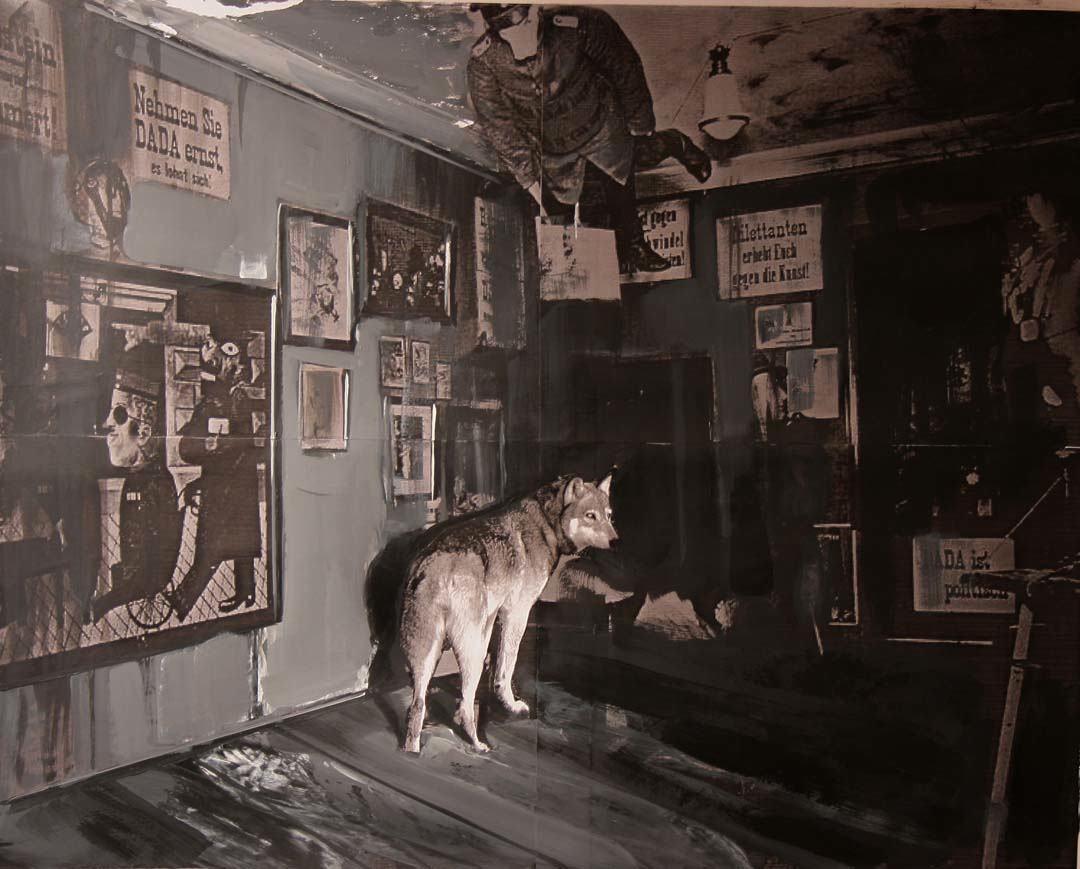Adrian Ghenie
Dada is Dead 2009
Oil on Canvas 220 x 200 cm
Haunch of Venison, London
23rd May 2009
This was the first time I had seen work by this young Romanian painter and it certainly was well suited to the Haunch of Venison’s new home in the old Museum of Mankind in Burlington Gardens, behind the Royal Academy. The show was rather obliquely titled “Darkness for an Hour” referring to the protest about global warming earlier in 2009. As the body of work revolved around two themes; Dada and the custard pie comedy of Laurel and Hardy, I couldn’t see the connection. However, the work made up for it and the paintings were sympathetically hung over four rooms. This allowed the twin themes to develop an interesting dialogue between the seriousness of the works related to Dada and the absurdity of Hollywood slapstick film stars.
The painting I have chosen is based upon a surviving documentary photograph of the First International Dada-Fair which was held in the Galerie Buchard, Berlin in summer 1920. This “exhibition” was both the climax of the Berlin Dada movement and its last public event. The organisers exhibited 174 "products" that they proclaimed "Anti-Art" ignoring traditional distinctions between original works and prints, and displayed provocative poster-manifestos on the walls.
The large political paintings by Otto Dix, "The War Cripples (45% Employable)" 1920 and George Grosz, "Germany, a Winter’s Tale" 1917 that were subsequently destroyed during the National Socialist period, can be seen on the left and right hand walls respectively. The suspension from the ceiling of a figure with the head of a pig and wearing an officer's uniform was taken as an insult to the honour of the Ministry of Defence of the Weimar Republic and the resulting court case, which could have ended in a death penalty, fortunately only resulted in a small fine.
Ghenie’s working process has been to use a large copy of the image and then abstract it by painting over areas, adding in what could be another Dada reference; Joseph Beuys’ coyote from his 1974 action piece “I like America and America likes me”, or maybe a wolf signifying the ghost of the National Socialism that is caught prowling the room biding his time. In the finished painting the last vestiges of the gallery goers have been replaced by a work that definitely wasn’t in the 1920 exhibition, “Black Cross” 1923 by Kazimer Malevich.
Although the work is given a definite melancholy air by its subject matter and reference points, I couldn’t help smiling at the irony in the image. Instead of painting becoming obsolete as predicted by Marcel Duchamp, the inventor of the “readymade” and the high priest of the “anything goes” art, we have the death of Dada being depicted in a painting almost a Century later. The pendulum will no doubt swing against painting again but it is a measure of the confidence in the medium that a young artist can paint with such vigour, have the nerve to use appropriation to make pronounce the death of the very movement that proposed it as a valid artistic strategy. But then as Marcel Duchamp says “the title is just another colour; it just doesn’t come out of a tube.”
©mike newton 2018


